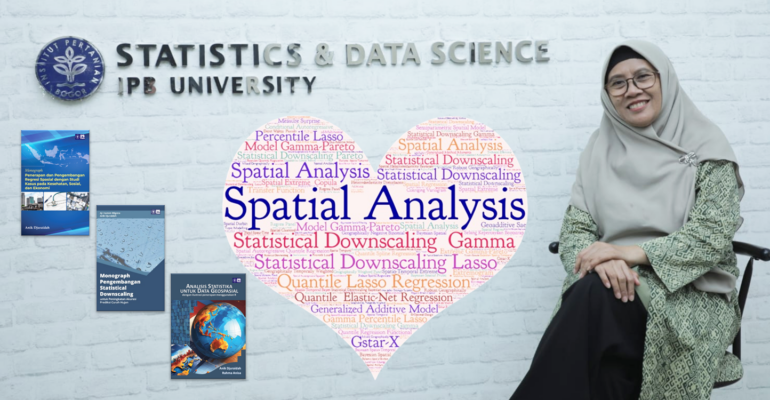IPB University Statistics Expert Successfully Builds Statistical Model to Handle Spatial Complexity, Can Predict Drought Conditions

Prof Anik Djuraidah, Professor of Statistics at IPB University succeeded in building a statistical modelling in tackling spatial complexity. She explained that the main concept in spatial statistics is spatial autocorrelation which refers to the first law of geography. The law states that everything is related to one another, but something close has a greater influence than something far away.
Furthermore, Prof Anik Djuraidah explained, one of the spatio-temporal models developed is the Spatio-Temporal Generalised Linear Mixed Model with Tweedie Compound Poisson Gamma Response in Statistical Downscaling. The distribution that can combine the two components is the Tweedie Compound Poisson-Gamma (TCPG) distribution.
The IPB University lecturer explained that the TCPG spatio-temporal model was estimated using the hierarchical probability method and the estimation was carried out iteratively using the Newton Raphson method. The TCPG spatio-temporal model has the best prediction accuracy for the next one year.
“Parameter estimators of the TCPG spatio-temporal model include the average number of rainfall events, rainfall intensity, and the chance of no rainfall events per month. Predictions from the ST TCPG model are able to capture spatial and temporal effects. It can be concluded that the ST-TCPG model is able to handle the complexity of spatial and temporal effects and is able to predict rainfall accurately,” said Prof Anik Djuraidah in the Press Conference of Pre Scientific Oration of Professor of IPB University, 5/6.
Prof Anik said, this modelling can also be used to predict drought in an area. Therefore, spatio-temporal modelling is important in overcoming spatial and landscape problems.
“Advances in information and computing technology provide greater access to the advancement of diverse spatial data, which is the biggest challenge in developing geospatial models,” said Prof Anik Djuraidah, IPB University lecturer from the Department of Statistics and Data Science, Faculty of Mathematics and Natural Sciences, IPB University.
Prof Anik continued, the development of spatial statistics does not only require technical innovation. She said the development of spatial statistics also requires collaboration between disciplines to achieve significant progress in understanding and solving complex spatial problems. (IAAS/RUM)



